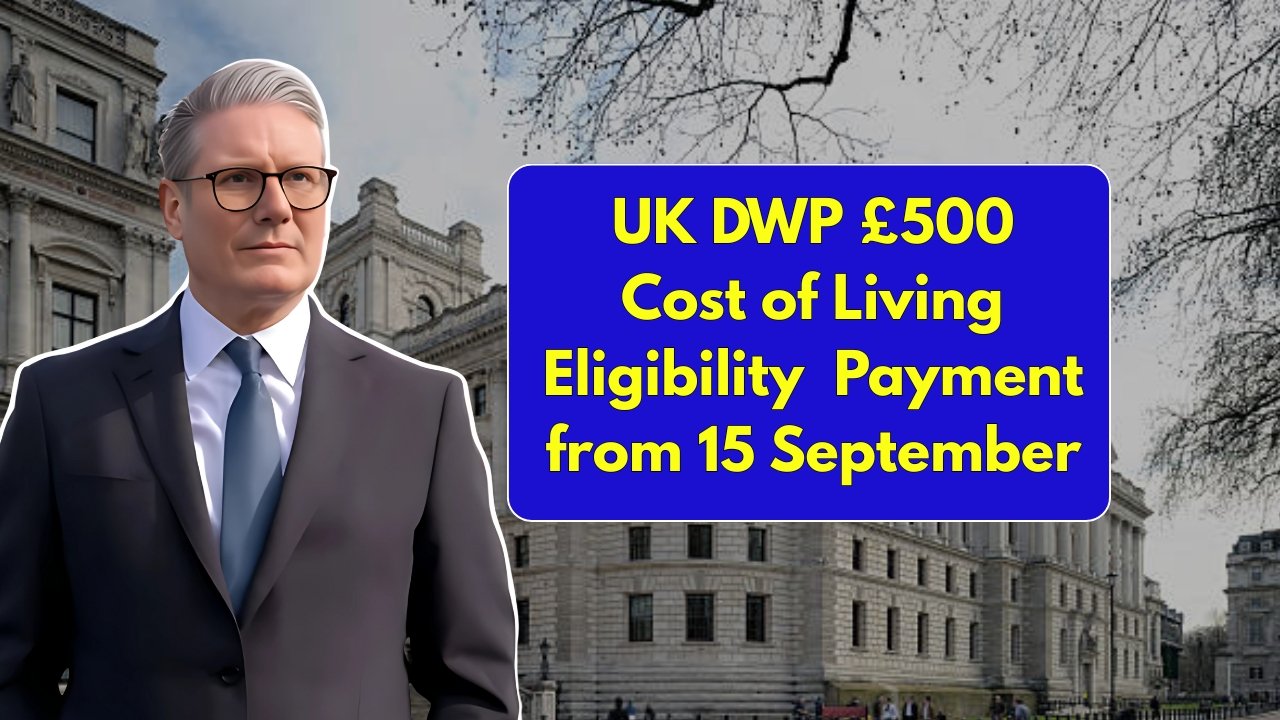Join on WhatsApp
Get the latest updates directly on WhatsApp – motivation, news & more!
The rising cost of living in the United Kingdom has placed significant pressure on households across the country. In response, the Department for Work and Pensions (DWP) has confirmed a £500 Cost-of-Living Payment for eligible recipients, starting from 15 September 2025. This payment is designed to provide financial relief to those who need it most and help cover essential expenses such as energy bills, food, and other household costs.
This article provides a detailed guide on who qualifies for the payment, how it will be distributed, and key details about accessing the funds.
What is the Cost-of-Living Payment?
The Cost-of-Living Payment is a one-time financial support measure introduced by the UK government to help households manage rising living expenses. The payment is part of a broader set of initiatives aimed at supporting low-income families, pensioners, and other vulnerable groups during periods of economic pressure.
Unlike regular benefits or pensions, the Cost-of-Living Payment is a lump sum intended to provide immediate relief and help households cope with increases in essential costs such as food, utilities, and transport.
Why the Payment is Important in 2025
In 2025, many households continue to experience the impact of inflation, higher energy prices, and other cost increases. The £500 payment serves as a practical form of assistance, helping to alleviate financial stress for those most affected.
For pensioners and low-income families, this payment can significantly ease monthly budgeting challenges, ensuring that basic needs are met without compromising financial stability. It also reflects the government’s ongoing commitment to social support during challenging economic periods.
Who Qualifies for the £500 Payment?
Eligibility for the DWP Cost-of-Living Payment is based on the recipient’s current benefits or pension status. Individuals who qualify include:
- Recipients of means-tested benefits such as Universal Credit, Income Support, and Employment and Support Allowance.
- Pensioners receiving the State Pension or Pension Credit.
- Individuals receiving other qualifying benefits as specified by the DWP.
It is important to note that eligibility is automatic for those already enrolled in qualifying programs. The DWP will identify recipients based on current records, so no separate application is required for most eligible individuals.
Payment Schedule from 15 September 2025
The DWP has confirmed that the £500 Cost-of-Living Payment will begin to be distributed from 15 September 2025. Payments will be made in a structured manner to ensure timely delivery to all eligible recipients.
- Direct Bank Deposits – Most recipients will receive the payment directly into their bank accounts.
- Cheques – Individuals without bank accounts may receive a cheque sent to their registered address.
- Payment Notifications – Recipients will be notified of the payment via mail, email, or their DWP online account, depending on the contact information on file.
By setting a clear payment date, the DWP ensures that eligible individuals can plan their finances effectively and access funds without delay.
How to Access the Payment
For most eligible individuals, the payment is automatic, and no action is required. However, there are a few steps to consider:
- Verify Personal Information – Ensure that your current bank details and contact information are up to date with the DWP.
- Check Eligibility – Confirm that you are receiving one of the qualifying benefits or pensions.
- Monitor Notifications – Keep an eye on letters, emails, or your online account for payment confirmation.
- Contact DWP for Issues – If the payment does not arrive by the expected date, contact the DWP to resolve any discrepancies.
Staying proactive helps recipients avoid delays and ensures that the payment is received smoothly.
Benefits of the Cost-of-Living Payment
The £500 Cost-of-Living Payment provides several advantages for eligible individuals:
- Immediate Financial Relief – Helps cover essential expenses such as groceries, energy bills, and transportation.
- Support for Vulnerable Groups – Pensioners and low-income households receive targeted assistance.
- Improved Budgeting – Receiving a lump sum allows households to plan for upcoming bills or unexpected costs.
- Ease of Access – Automatic payment reduces administrative hurdles and ensures quick distribution.
By addressing immediate financial needs, the payment supports household stability and reduces stress for recipients.
Important Considerations
While the Cost-of-Living Payment is beneficial, recipients should be aware of several important points:
- Automatic Eligibility – Most payments are automatic, but ensure your information with the DWP is current.
- Single Payment – This is a one-time payment, not a recurring benefit.
- Not All Benefits Qualify – Check the list of qualifying benefits to confirm eligibility.
- Timing of Payment – Payments may vary slightly depending on bank processing times or mail delivery schedules.
Understanding these considerations ensures that recipients can plan effectively and make the most of the support provided.
Tips for Recipients
To maximize the benefits of the £500 payment, consider the following tips:
- Plan Expenses – Use the funds to cover urgent bills or essential purchases first.
- Avoid Scams – The DWP will never ask for personal information or payment in exchange for the grant.
- Track Receipts – Keep records of spending to monitor how the payment assists your household budget.
- Stay Informed – Check DWP announcements for any updates or additional payments.
These practices help ensure that the payment provides meaningful support to households that need it most.
Conclusion
The UK DWP £500 Cost-of-Living Payment starting from 15 September 2025 offers crucial financial relief to eligible pensioners and low-income households. By providing a one-time lump sum, the payment helps cover essential expenses and eases the financial burden caused by rising living costs.
Understanding eligibility, the payment schedule, and how to access the funds allows recipients to plan effectively and benefit fully from this support. The government’s commitment to assisting vulnerable households underscores the importance of this program and its role in promoting financial stability across the country.



